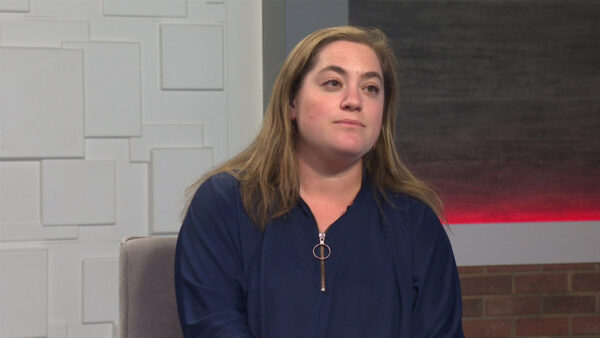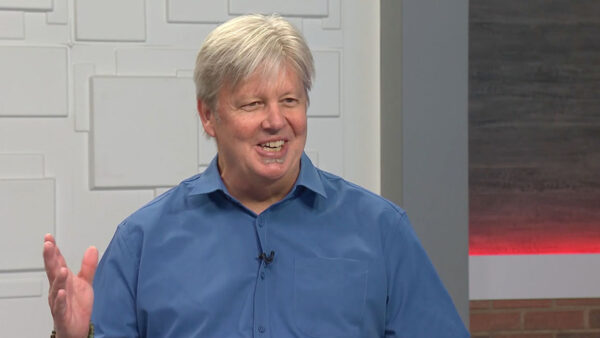More than 3,000 rural superintendents, principals and teachers were asked in a survey what rural schools need to teach math and science by the Arizona Department of Education. Science Foundation Arizona Chief Operating Officer Margaret Mullen will discuss the results of that survey.
Ted Simons: The State Department of education recently surveyed more than , rural superintendents, principals and teachers on what they need for better results in the classroom. Science Foundation Arizona Chief Operating Officer Margaret Mullen is here to discuss the results of the survey. Good to have you here. Surveying teachers, principals, why?
Margaret Mullen: We had a donor say, you've invested $40 million in education in the major communities in Arizona. How do you know what the rural communities need? So we went to the Department of Education and asked if they would send the survey out for Science Foundation Arizona. We got an amazing 31% response rate. We sent to it every public school superintendent and teacher in the rural counties. I must say the results were devastating.
Ted Simons: I want to get to the results in a second here. I was going to ask you what constitutes a rural school and a rural school district.
Margaret Mullen: In Arizona everything outside of Maricopa and Pima County are considered rural by state definition. We surveyed all of those rural counties. They are communities like Flagstaff, Prescott, Yuma, that we would consider urban. We've made significant investments in those communities and we will continue to do so. But this will force us to look at what we can do to help those smaller communities in Arizona.
Ted Simons: Okay. What was asked in the survey? What was found?
Margaret Mullen: We asked teachers how much professional development they had, were they qualified to teach science and math if they were teaching science and math. We asked if they had the necessary tools to do their job. We asked what they need to do improve science and math teaching and academic achievement in Arizona. Unfortunately, in rural Arizona, very few teachers get adequate professional development, and in fact very little in math and science. Unfortunately, most of them don't have the tools necessary to do their job. You would think they would beg for salary increases, smaller class sizes. That is not the case. What these people are saying is we have to spend our own money to do basic -- to have the basic resources in our classroom. We need equipment, some of these stories are heartbreaking. They have textbooks that are 12 years old that don't have all the pages in them. They don't have basic supplies. They spend an average of $1000, a year, science and math teachers, for the supplies for their own classrooms. Yet they make less than $30,000 a year.
Ted Simons: This sounds like basic stuff here. Where is the state? Where is accountability? Where is oversight? That sounds unacceptable.
Margaret Mullen: It is unacceptable to most people. The State will tell you they invest per pupil and there is an additional amount of funding that goes to rural Arizona. But it goes there because of things like the transportation needs. People spend a lot more time on a school bus. They don't last as long. Bottom line, the money does not get to the teachers in the class. If we want an educated population to continue to develop Arizona and have the tax base we have, we can't throw away 22% of the student population. That's what lives in rural Arizona.
Ted Simons: We will get critics who say we can't throw money at education. We've spent enough, some say. I realize what the state rankings are. Some say you are spending it on the wrong things.
Margaret Mullen: I'm not asking the state to put money in this. I don't trust the state to get this money to the teachers and into the classroom. I'd like the state to look at the expenditures, determine how much is actually getting to the classrooms to improve academic achievement. What we're going to do is take philanthropic dollars and ask the public to help us, in addition to what we're getting from philanthropic donors. We will get gift cards to teachers, professional development to teachers, and basic science and math equipment to teachers.
Ted Simons: Through Science Foundation Arizona. How much are we talking about?
Margaret Mullen: We've already raised $15 million. That sounds like a lot, but it's less than $100 per rural school. At least we will begin to make a difference in the classroom.
Ted Simons: Do you know how the money will be distributed?
Margaret Mullen: Yes, we are going to start with Navajo and Apache Counties. We are hiring a field staff person to NSF to work with the schools. We will dedicate up to $10,000 per school. But the teachers have to get the principal and superintendent to agree to do their part. That's not financial. That's letting them have common planning time so they can have the professional development and the planning across the curriculum.
Ted Simons: Are there RFPs involved? How do you know where it's going to go?
Margaret Mullen: We're tough. We will issue an RFP and require the superintendent and principal to sign to do the things they need to do. We will give gift cards to the teachers for supplies. They will give us receipts. We will track everything, the previous three years of academic performance and the next three years, to make sure what we're doing actually improves academic achievement.
Ted Simons: Are you working in conjunction at all with the state? Sounds like something the State Department of Education should be doing.
Margaret Mullen: The State Department of education helped us do this. They are very aware of what we're doing. They have no surplus funds to get to the classroom. They understand the problems but they don't have the resources to do it. This is a short-term stop-gap measure to give teachers hope, and hopefully to get some students' achievement increased in rural Arizona.
Ted Simons: How do you address the concerns, everything from after school programs and basic needs from teachers with common core now coming in. The standards of the state are changing big-time. How does this play in?
Margaret Mullen: We're not going to be able to implement common core unless we can get basic supplies and equipment to the teachers. If you read some of the teachers' comments -- these are not my answers, these are comments from teachers in Arizona saying, we haven't had textbook changes in 12 years and we don't have all the pages in our textbooks. We don't have calculators in our classroom. How do we get the basic needs so they can begin to implement common core. Teachers have to have increased rigor in the classroom. Common core is important. They can only do it with the supplies and equipment necessary to do their job.
Ted Simons: Science foundation, $15 million in three years.
Margaret Mullen: All of that. We've heard for example Salt River Project, the minute they saw this called and said we've got a plant in Apache County, we're on board, we'll help. I think there will be a lot of corporate support in Arizona, but we are getting a lot of support from around the country.
Ted Simons: Give us the website.
Margaret Mullen: www.sfaz.org.
Ted Simons: All right. Margaret, good luck, good to have you here.
Margaret Mullen: Thank you, good to see you.
Margaret Mullen:Science Foundation, Chief Operating Officer;























